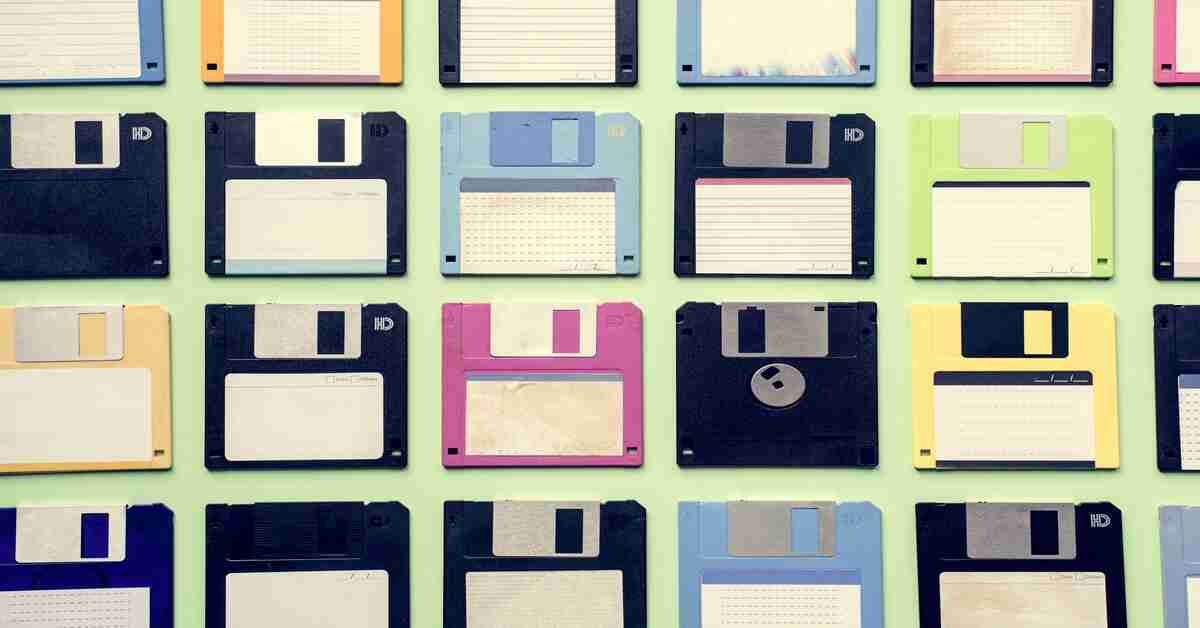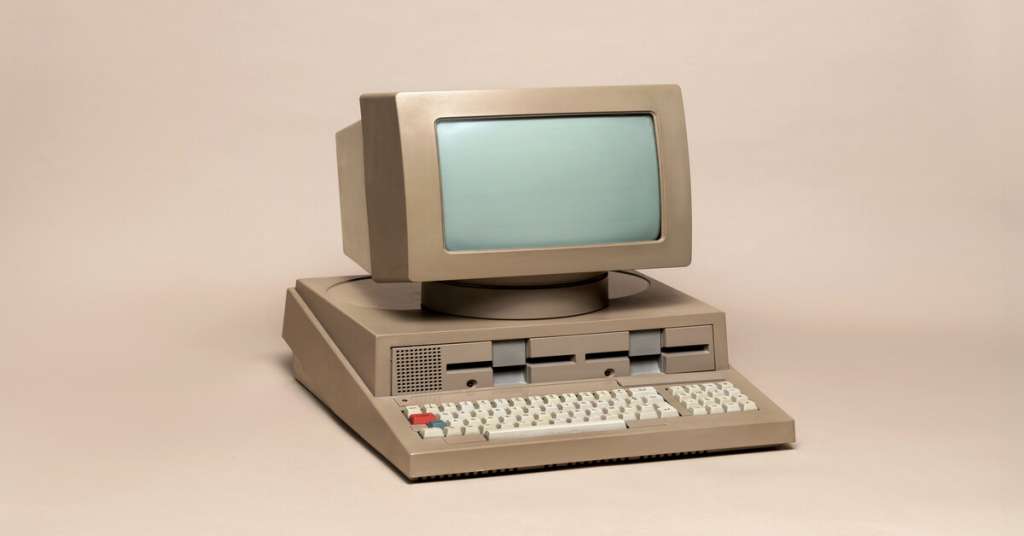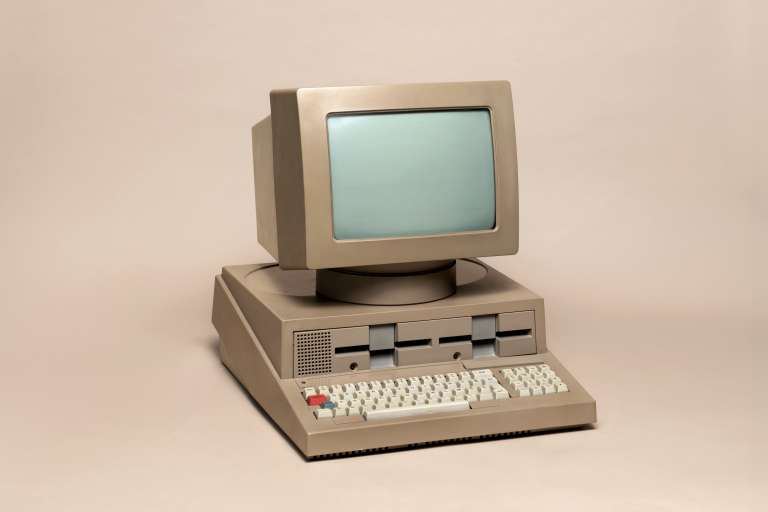Data storage has been characterized by amazing developments that are characterized by the continuous desire to have efficiency, capacity, and accessibility in the management of digital data. Since the dawn of the floppy disk, and more recently the cloud solutions that we use in our everyday lives, the history of the development of data storage offers a great example of how technology follows the needs of the more data-driven world. This article will look at the major milestones that occurred in the evolution of data storage and their effects on contemporary computing.
Initial Data Storing: Floppy tapes and Magnetica tapes
Floppy Disks
One of the first forms of portable data storage was introduced in the late sixties and was called floppy disks. The earliest 8 inch floppy disk came with a humble storage capacity of 80 kilobytes. In the 1980s, the standard changed to the 3.5-inch floppy disk which had a capacity of 1.44 megabytes. Although floppy disks were highly important in the distribution of software and in transferring data, they were constrained by their small capacity as well as imperviousness to damages.
Magnetic Tapes
Prior to the invention of the floppy disk, storage of data mostly involved magnetic tapes particularly in the mainframe computers. Magnetic tape storage was developed in the 1950s and had more space than the floppy disk, and thus organizations could use it to store vast amounts of data. Tapes had the capacity to store a number of megabytes of data and they were frequently used as a backup and storage system and as archives.
The Rise of Hard Disk Drives
Hard Disk Drives (HDD)
The use of hard disk drives (HDD) in the 1950s was a major milestone in data storage. HDDs were also faster than magnetic tapes since they had a capacity of several megabytes. By the 1980s, technology improved to allow the HDDs to have a storage capacity of hundreds of megabytes, and it became the favorite in personal computers and servers.
The HDDs have spinning plates covered with magnetic substance to read and write data. However, HDDs are still trusted due to their mechanical nature and a balance between performance and cost has been offered over decades.
Migration to Solid-State Drives (SSD)
Solid-State Drives (SSD)
With the technological breakthrough, solid-state drives (SSDs) were introduced as an improvement of HDDs. SSDs store data in flash memory as opposed to the HDDs that operate on moving parts, making the read and write speed much higher. SSDs had been available in the 1990s, although they were not commercially feasible until the mid-2000s.
As their storage capacities continue to grow and their prices begin to drop, SSDs have become popular in laptops, desktops, and data centers. Their high speed and durability are good in activities that need quick access to data as in gaming and high-performance computing.
The Cloud Revolution
In the late 2000s, the publication of cloud storage changed the data storage once again. Cloud storage enables users to store and retrieve data online and this removes the use of physical storage devices. Large market competitors such as Amazon Web Services (AWS), Google drive, Dropbox and Microsoft OneDrive have ensured that cloud storage is highly accessible to both consumers and organizations.
The advantages of cloud storage are enormous
- Scalability: Customers can easily add or remove their storage capacity according to the need.
- Accessibility: The data can be accessed in all devices which are connected to the internet with ease, allowing collaborative work and remote work.
- Cost-Effectiveness: The cloud storage solutions in numerous cases are based on a pay as you go model where one only pays what he/she needs in terms of storage.
Cloud storage has altered our data storing behavior besides modifying our data management behavior, which has seen the growth of services like backup services, data redundancy, as well as recovery of the disaster.
Trends in the storage of data today
Hybrid Storage Solutions
With the ever growing nature of data storage technology, there has come about hybrid storage solutions, which are a mix of the advantages of on-premises and cloud storage. A combination of the local storage of frequently used data and cloud storage of archiving and backup are often used by businesses to achieve an optimal performance and cost-efficiency.
Security and Encryption of Data
Due to the emergence of cyber threats, data security has become a major issue. The current data storage solutions emphasize the security by encrypting data and using access controls and adhering to such regulations as GDPR. These are used to secure confidential information ensuring that data is safe in transit and rest.
Future of Data Storage
In the future, it is probable that the future of data storage will be influenced by new emerging technologies including:
Storage: The storage of data using quantum bits (qubits) has the potential to realize some of the highest storage capacities and speeds ever seen.
DNA Data Storage: Researchers are looking into the use of DNA molecules in storage of data, which may provide amazing density and longevity than the traditional means.
Conclusion
The fact that the storage of data has changed to cloud solutions as compared to the old methods of using floppy disks illustrates the dynamic face of technology and how it reacts to the changing demands. The milestones in this path have been constructed on the one before it, and we have today, the sound and flexible data storage solutions. Now and as we move forward generating and relying on large quantitative measures of data, it will be important to keep informed of such developments in data storage both as individuals and businesses.
Frequently Asked Questions (FAQs)
1. What are the principal forms of data storage?
The primary data storage formats are magnetic tapes, floppy disks, hard disk drive (HDD), solid-state drive (SSD) and cloud storage. Both types have their merits and demits depending on such factors as capacity, speed, and accessibility.
2. How does cloud storage work?
Cloud storage involves storing information in remote servers that are reached through the internet. The users are able to store, retrieve their data in any internet-connected device and hence, there is ease in collaboration and data management.
3. What are the advantages of SSDs in comparison to HDDs?
The advantages of SSDs over HDDs are; it is much faster in read and write, more durable since it does not have any moving parts, and consumes less power. All these characteristics render SSDs suitable in high-performance systems and highly portable devices.







Leave a Comment